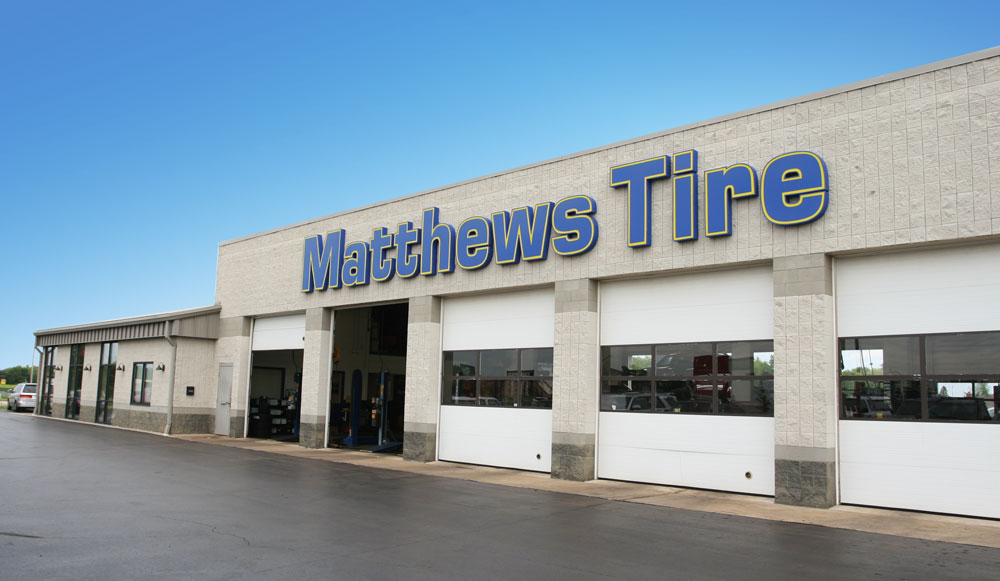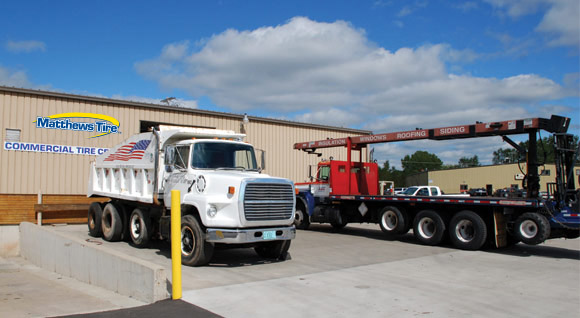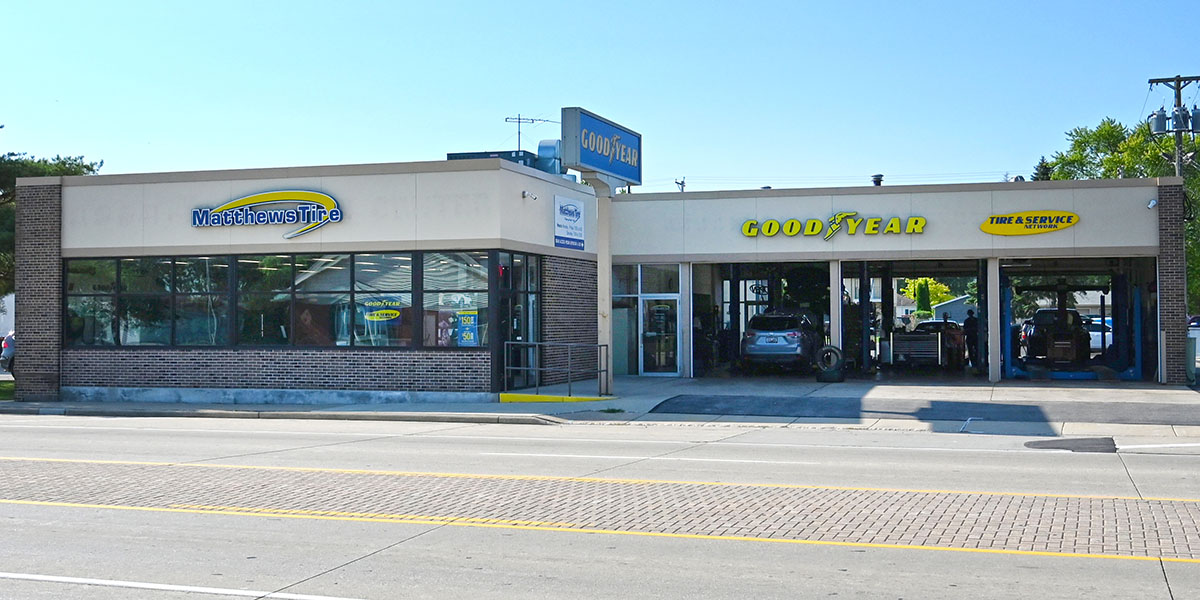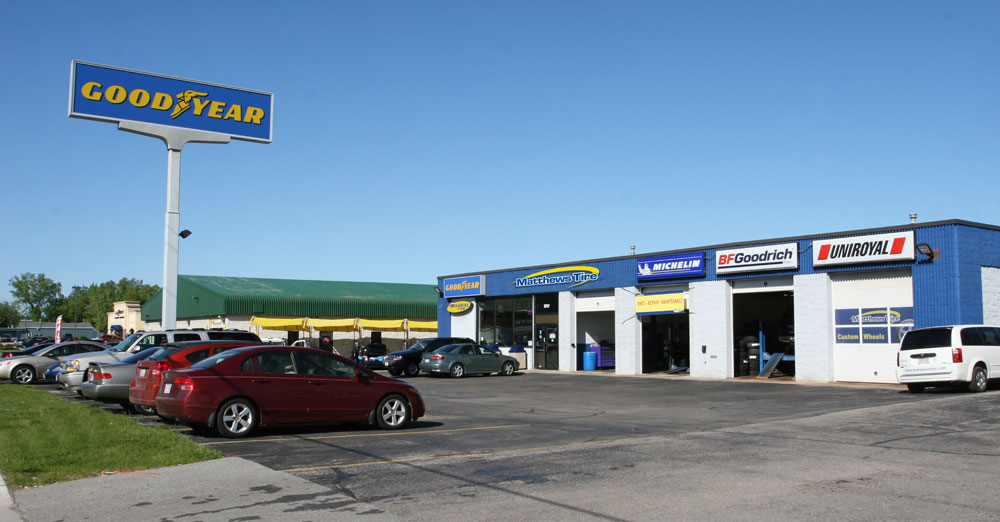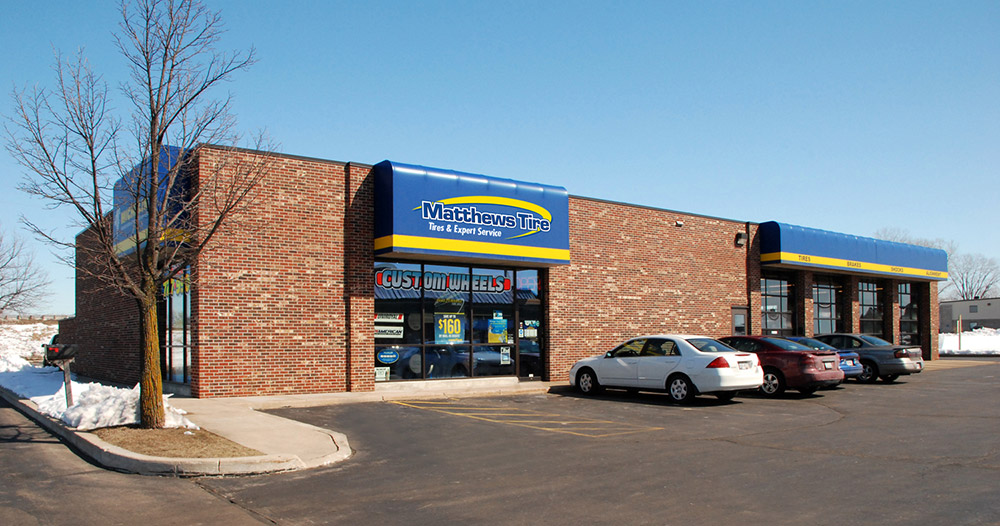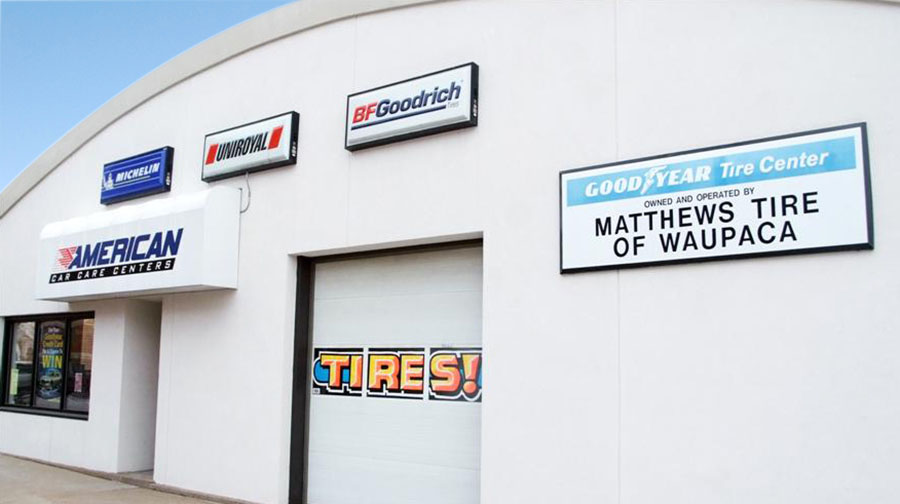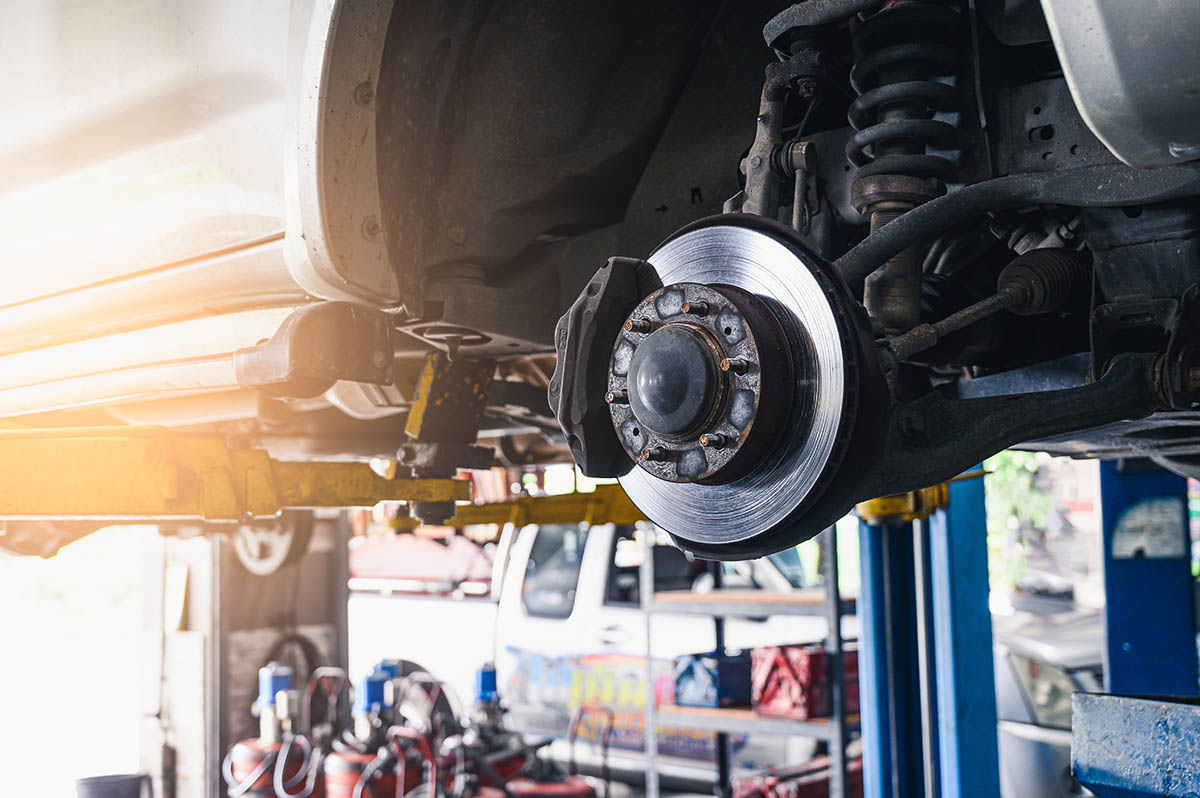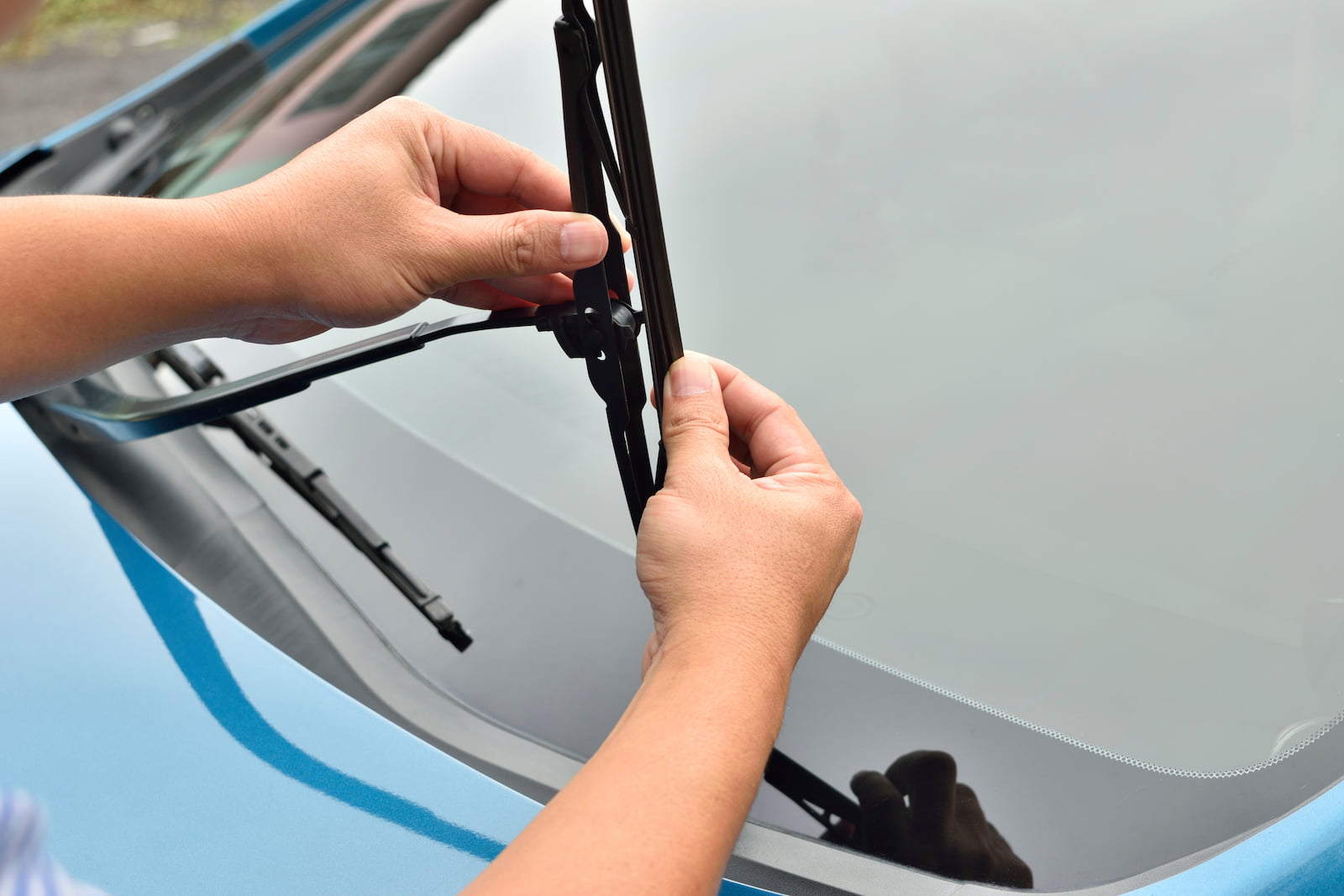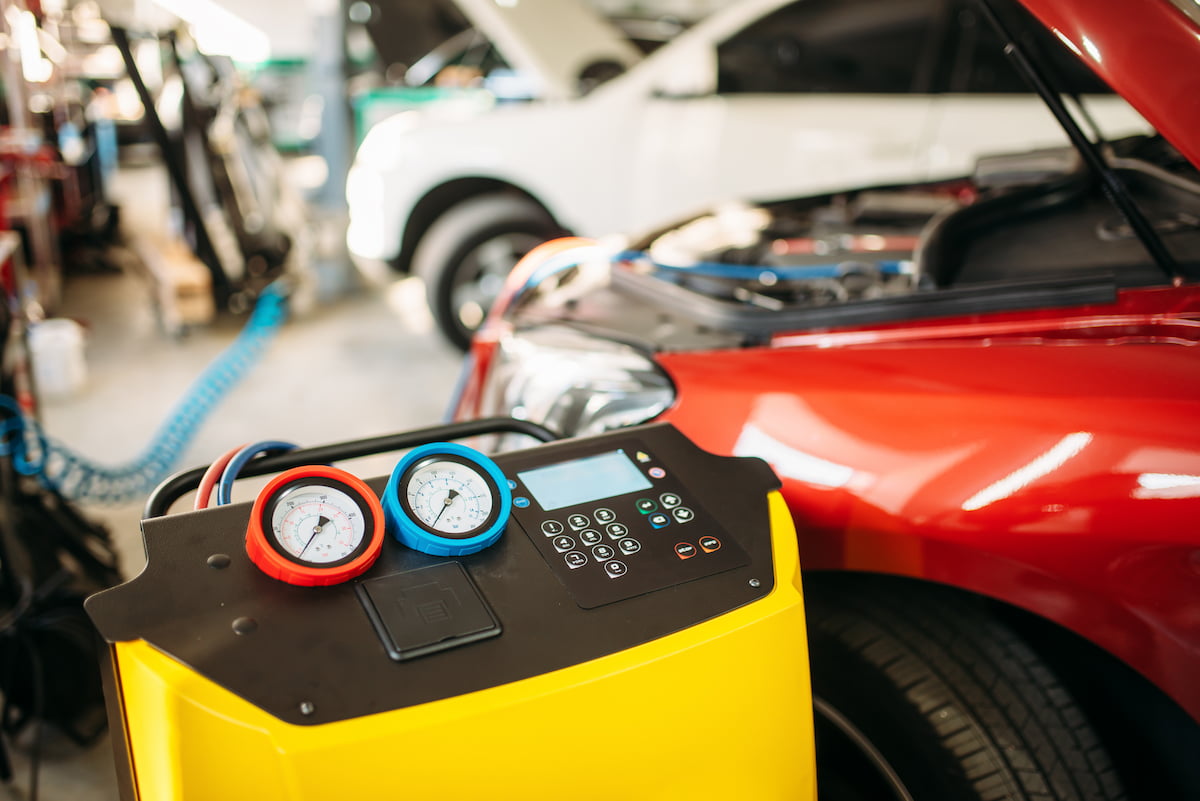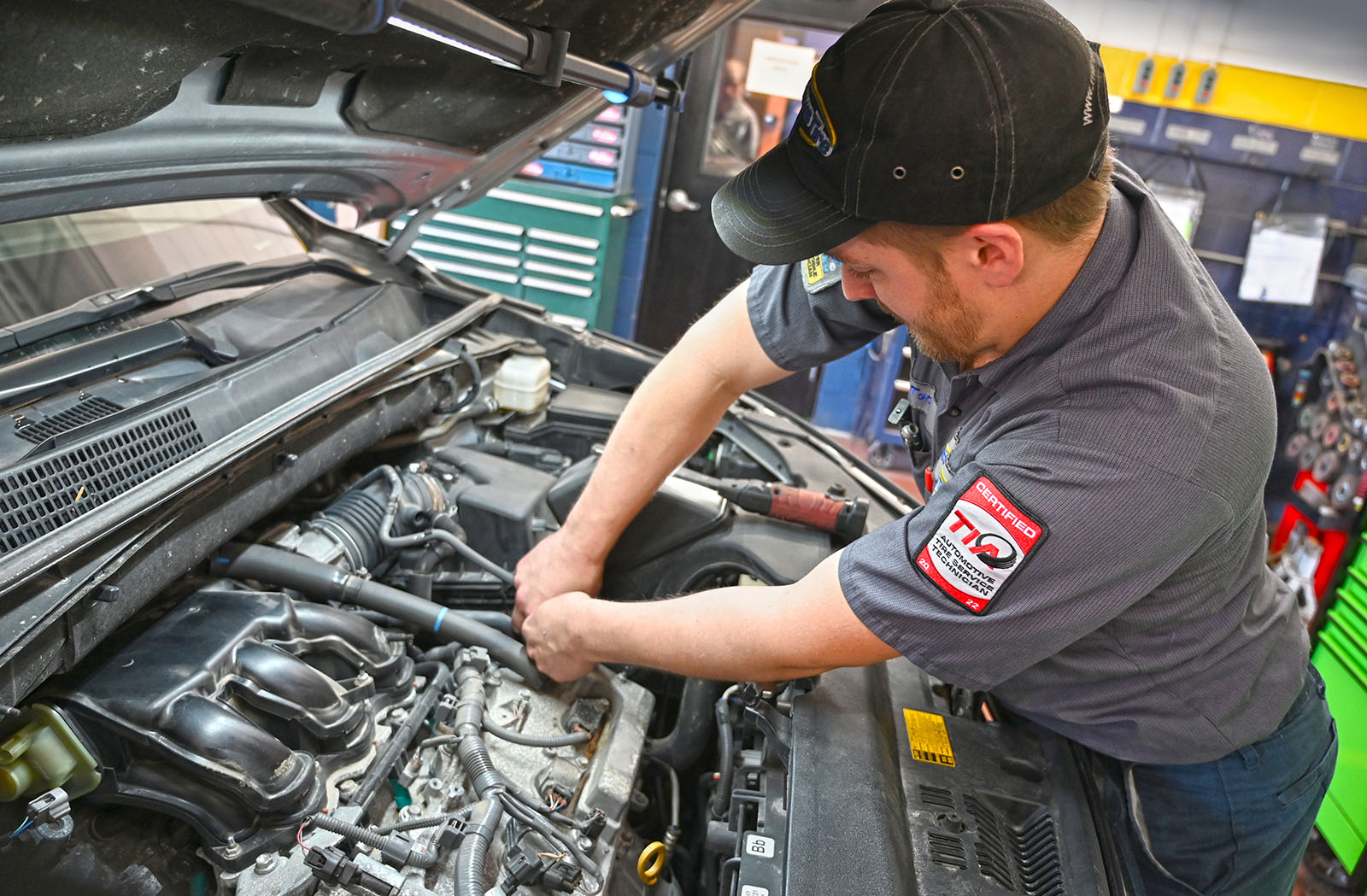It’s easy to overlook or procrastinate on some important regular car maintenance items like replacing brake pads, but letting your brakes go too long without maintenance can lead to expensive repairs—or worse. In this blog post, Matthews Tire Fond du Lac Manager Allen Coburn shares key insight into why brakes are among the top repairs his team sees, and why you should replace brake pads when your technician lets you know it’s time.
Knowing When it’s Time to Replace Your Brake Pads
A few key indicators may signal that it’s time to replace your brake pads, Allen said. First, you might start to notice brake dust building up on your wheel. “It’s usually a rusty, dusty kind of color, so you’ll notice it if you see that you have three silver wheels and one that looks like it hasn’t been washed in a while,” he said. “That’s a definite hint that you’ve got a problem with the brake.”
Drivers may also begin to feel that the car needs more force on the brake pedal to stop or that it’s taking a longer distance to come to a complete stop, Allen said. They also might notice the tell-tale squeaking while braking. Brake pads are mounted with clips that have tabs sticking out to the side, and when the brake pad becomes worn down, those tabs come into contact with other surfaces, and that’s what causes the squealing.
For those drivers with certain later model European cars, the brake pads have built-in sensors that will notify a driver with a dashboard signal that it’s time to get the brakes replaced.
Technicians will check brake pads anytime a customer comes in for regular tire rotation maintenance—which should happen about every 6,000 miles—so it’s important to bring your car into the shop regularly and on schedule.
Why it’s Important to Maintain Brakes Regularly
A brake pad is usually between 10 and 12 millimeters thick, depending on the vehicle, and Matthews Tire technicians will recommend replacement once they are down to about 4 millimeters. “At that point, you really need to think about doing them soon, because if you let it go much beyond that, you risk getting into a metal-on-metal type situation, and that’s going to cost you money.”
At four millimeters, there’s still time to plan for a brake pad replacement. “They’re not completely worn out and they’re not a danger yet,” Allen said. “At two millimeters, they can go pretty quickly.”
If the pads wear out completely, the metal plate where the pads are mounted will now come into contact with rotors, Allen said. “That causes that terrible grinding noise.”
Additionally, the vehicle’s calipers can become damaged. “Calipers are one of the most expensive parts of the brake system, and you could easily double your cost of a brake repair just by letting it get to metal-on-metal,” Allen said.
The Value of Replacing Brake Pads
Keeping your brakes in good repair means you’re “keeping more money in your wallet,” Allen said. “You’re not fixing things you don’t have to fix, and it’s less wear and tear on your car—and cars are more expensive now than ever.”
You’re also ensuring that your family is safe—as well as everyone else on the road with you. “Regular maintenance means you don’t have to worry that your brakes are going to fail,” Allen said.
A normal brake pad replacement on one axle with no additional repair usually will take only about an hour.
Conclusion
Like our own health, brakes are often one of those things that people don’t think about until something goes wrong.
If you need help determining if your brakes are in good condition, bring your vehicle to any Matthews Tire.
“Unfortunately, it’s one of those things that can just creep up on you and become a problem before you know it,” Allen said. “If you do your diligence and get your car serviced, you’ll catch it. You’ll save yourself money, and you’ll be safe.”
